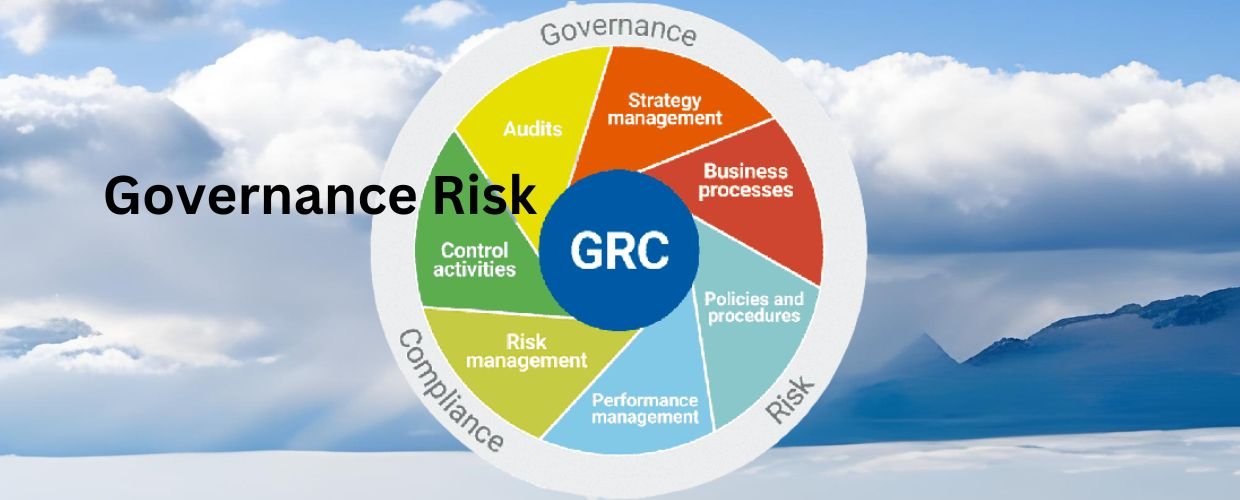Governance and risk management are critical to organizational success. Effective governance provides a framework for decision-making and accountability, while risk management helps organizations identify, assess, and mitigate potential threats. The intersection of these two disciplines gives rise to governance risk, a concept that focuses on managing risks within the context of good governance practices. This article will explore the significance of governance risk, its key components, and how organizations can effectively integrate governance and risk management to achieve robust and sustainable operations.
The Importance of Governance Risk
Governance risk is an essential aspect of good corporate governance and risk management. It enables organizations to operate sustainably and responsibly while protecting their reputation and financial stability. It is essential for organizations as it combines good governance and risk management principles. Here are some reasons why governance risk is crucial:
Alignment of Objectives
Governance risk ensures that an organization’s risk management efforts are aligned with its strategic objectives and overall governance framework. By integrating risk management into governance processes, organizations can make informed decisions considering opportunities and potential risks.
Stakeholder Confidence
Effective governance risk practices instill confidence in stakeholders, including shareholders, investors, customers, and regulators. When organizations demonstrate strong governance and risk management practices, stakeholders feel assured that risks are managed effectively, increasing trust and credibility.
Enhanced Decision-making
Governance risk provides a structured approach to decision-making, considering potential risks and their potential impact. By considering risks in decision-making, organizations can make more informed choices that align with their strategic objectives while mitigating possible adverse consequences.
Compliance and Legal Requirements
Governance risk helps organizations comply with legal and regulatory requirements. By identifying and managing risks, organizations can ensure compliance with relevant laws, industry standards, and ethical guidelines, reducing the risk of legal liabilities and reputational damage.
Components of Governance Risk
Governance risk comprises several key components that organizations must address effectively. Here are some essential elements of governance risk:
Risk Governance Framework
Organizations should establish a risk governance framework that defines the roles, responsibilities, and accountabilities for managing risks. This framework should be integrated into the overall governance structure, ensuring that risk management becomes integral to decision-making at all levels.
Risk Assessment and Identification
Organizations need to conduct comprehensive risk assessments to identify potential risks and their potential impact on achieving organizational objectives. It involves analyzing internal and external factors, understanding industry trends, and engaging relevant stakeholders to identify and assess risks.
Risk Mitigation Strategies
Once risks are identified, organizations must develop appropriate strategies. These strategies include implementing controls, establishing risk management processes, creating contingency plans, and allocating resources to manage identified risks effectively.
Monitoring and Reporting
Organizations should continuously monitor and review risks to ensure the effectiveness of risk mitigation strategies. Regular reporting on risks and their management should be communicated to relevant stakeholders, including the board of directors, executive management, and external parties, as necessary.
Integrating Governance and Risk Management
Integrating governance and risk management is crucial for effective governance risk practices. Here are some strategies to achieve this integration:
Board Oversight
The board of directors should provide oversight and guidance on risk management practices, ensuring that risks are identified, assessed, and managed effectively. Board members should be well-informed about risks and their potential impact on the organization’s strategic objectives.
Risk Governance Policies
Organizations should establish clear policies and procedures that outline the governance risk framework, including roles, responsibilities, and decision-making processes. These policies should be communicated to all levels of the organization, ensuring a consistent approach to governance risk management.
Risk Culture
Organizations should foster a risk-aware culture where employees at all levels understand the importance of risk management and actively contribute to identifying and managing risks. It can be achieved through training programs, awareness campaigns, and incentives that promote risk-aware behavior.
Integration of Processes
Governance risk should be integrated into existing governance processes, such as strategic planning, performance management, and internal controls. This integration ensures that risk considerations are embedded in decision-making processes and that risk management becomes an inherent part of daily operations.
Continuous Improvement and Adaptation
Governance risk is not a one-time endeavor but requires continuous improvement and adaptation. Organizations should regularly assess and refine their governance risk practices to address emerging risks and changing business environments. It involves staying updated on industry trends, evolving regulatory requirements, and emerging risk management practices. By embracing a culture of continuous improvement, organizations can enhance their capabilities and respond effectively to new challenges.
Conclusion
Governance risk brings together the principles of good governance and risk management, ensuring that organizations effectively manage risks within their governance framework. By integrating administration and risk management, organizations can align objectives, enhance stakeholder confidence, make informed decisions, and comply with legal requirements. The components of governance risk, such as risk governance frameworks, risk assessment, mitigation strategies, and monitoring, provide a structured approach to managing risks. By continuously improving and adapting their practices, organizations can achieve robust and sustainable operations while navigating the complexities of an ever-changing business landscape.







